A Brief History of Sampling at the Pier
The construction of the original Scripps Pier was completed in 1916 following the incorporation of the Marine Biological Association of San Diego into the University of California in 1912. With this designation as a research campus of the University, the association was renamed the “Scripps Institution for Biological Research of the University of California” (later to be renamed “Scripps Institution of Oceanography”), and there came a push to further expand the campus’s research capabilities. The 1000-foot pier, located approximately 300 feet north of the George H. Scripps building, was completed at a final cost of $36,000 with funding provided by provided by Ms. E.B. Scripps (Shor 1977).
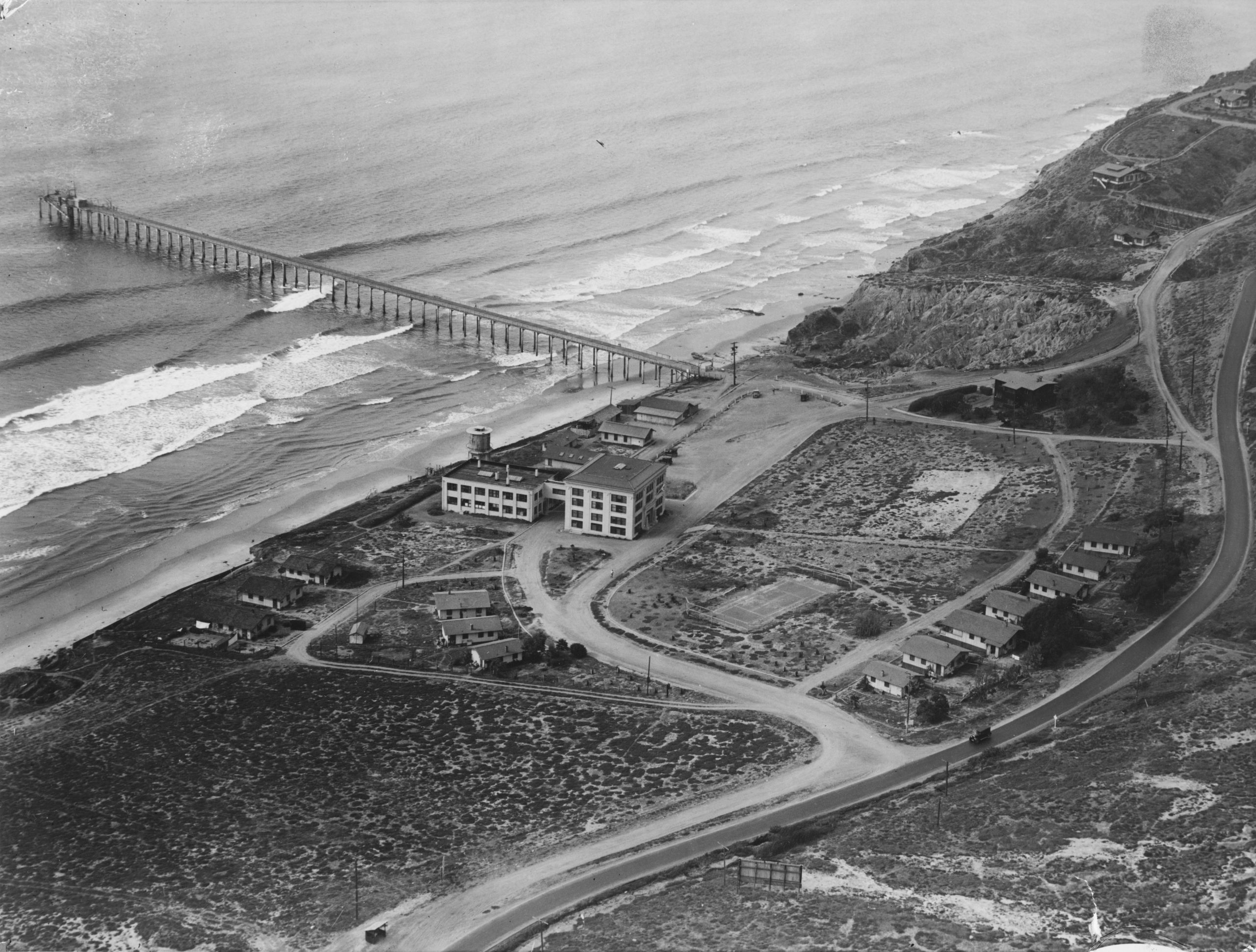
Scripps Pier before 1932
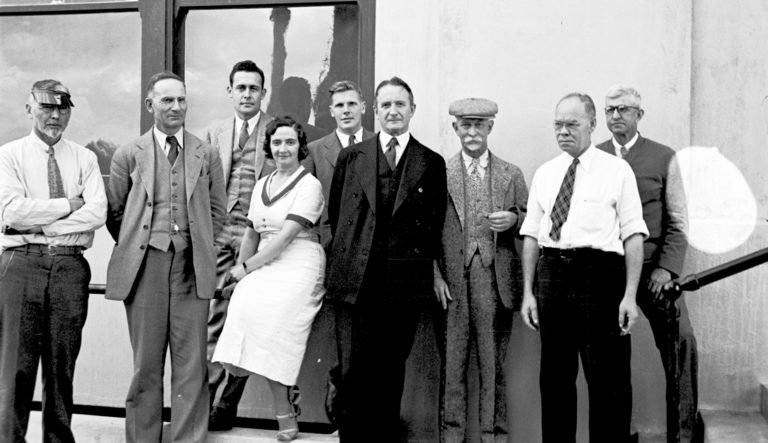
Pictured left to right: Francis Bertody Sumner, George Francis McEwen, Roger Revelle, Blodwyn Lloyd, Richard H. Fleming, Bjorn Helland Hansen, Thomas Wayland Vaughan, Erik Gustaf Moberg and Winfred Emory Allen. 1935.
As soon as the pier was completed, researchers began monitoring weather, sea surface temperature, and salinity, and thus kickstarting the daily sampling that is still being conducted to this day. Temperature and salinity measurements were limited to surface samples for the first 10 years, until 1926 when researchers started conducting bottom sample measurements at Scripps Pier.
In 1987-1988, after being battered by large storms in the mid-1980s, the decision was made to decommission the pier after seven decades of service. The new pier was constructed adjacent to the old pier and was given the name “Ellen Browning Scripps Memorial Pier” in appreciation of the Institutes early benefactor. It has stood now for over 30 years, and has continued a legacy started by its predecessor. Although the current pier has not stood for even half as long as the original its importance continues to grow with each sample taken from it. In the words of Professor John McGowan: “The only way to measure change is through time series.” (McGowan Pers. Comm.) Now more than ever, the pier’s usefulness and time series data can help us understand long-term trends in ocean temperature (McGowan 1998, Di Lorenzo et al 2005, Kim and Cornuelle 2015) and sea level (Cayan et al 2008).
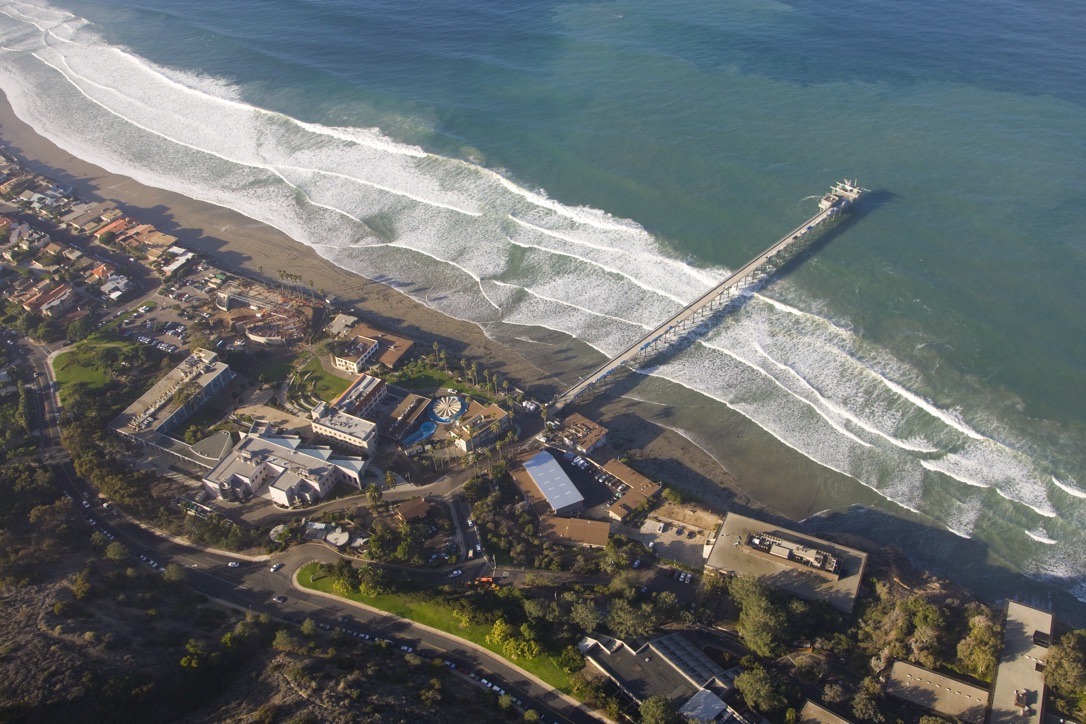
Aerial shot of Scripps Institution of Oceanography campus
Photo by John Rowe Photography
Written by: Matthew Hubbell, Elena Beckhaus, Jimmy Fumo, Melissa Carter, Reinhard Flick, and John McGowan.
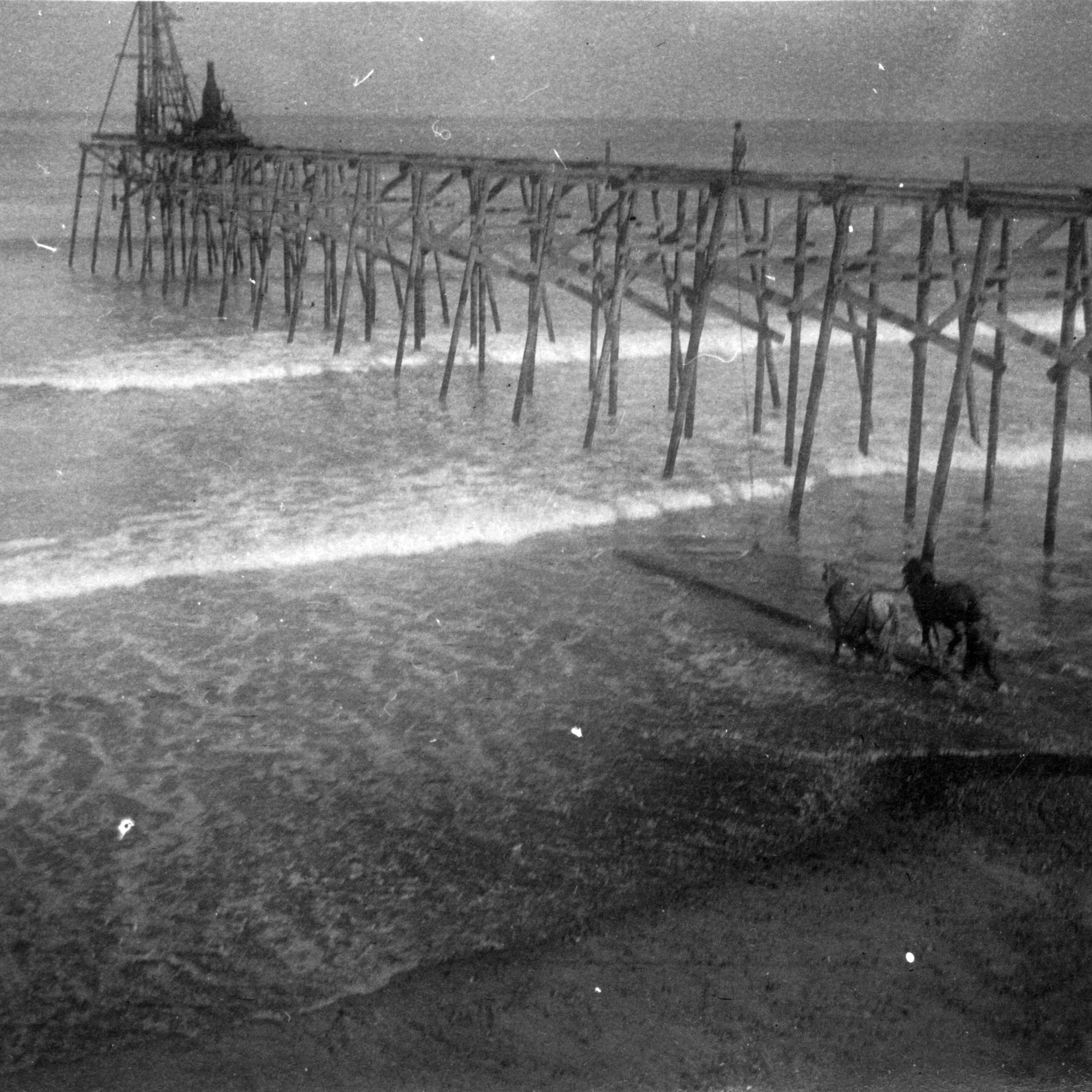
Early construction of wooden pier. Horses help to pull a pier piling while a man atop the pier guides the piling with a tag-line. Notice the short distance construction has made from the beach indicating this photo is from early in the process of construction. Crane and steam engine are visible at far end of pier. Photo by Wesley Clarence Crandall. 1915.
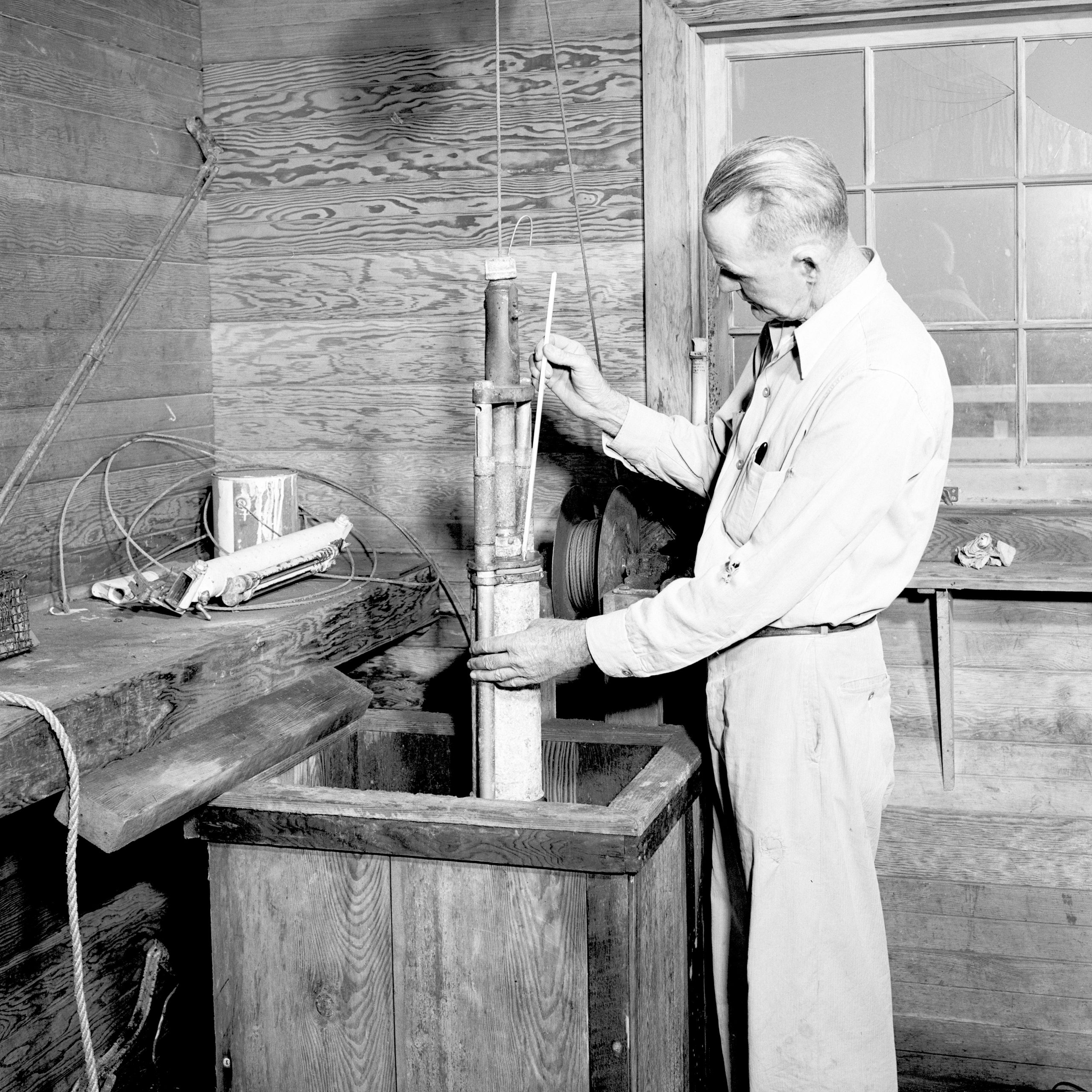
Claude W. Palmer sampling from tide room. 1949.
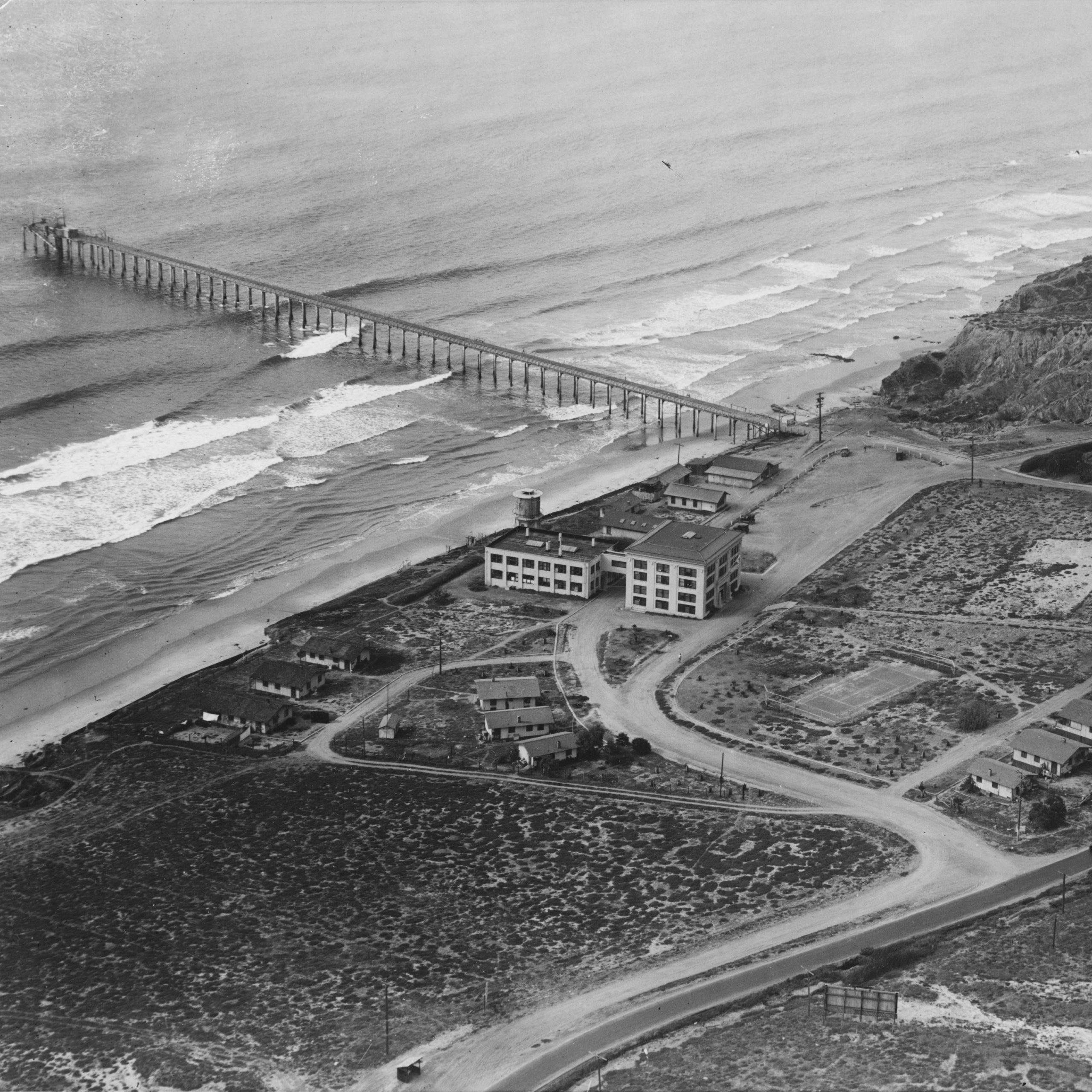
Scripps campus pre-1932. Original Scripps building and director’s house are present in photo, and are still standing today. Saltwater tower, which was demolished in 1932, can be seen next to Scripps library and laboratory.


